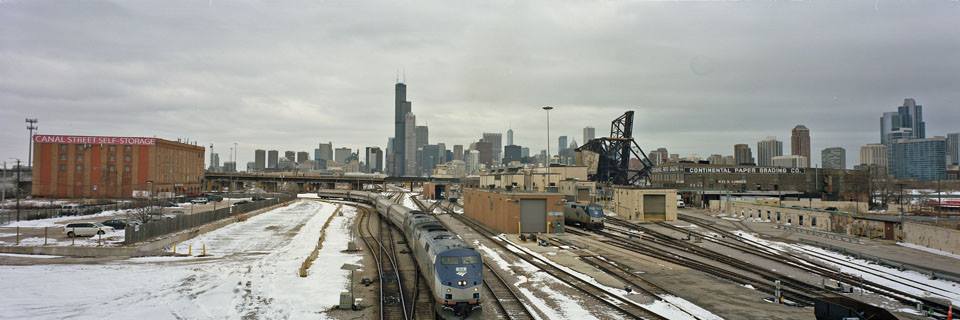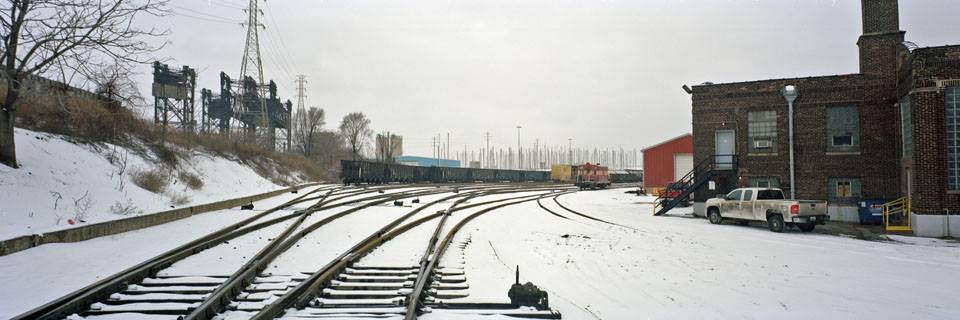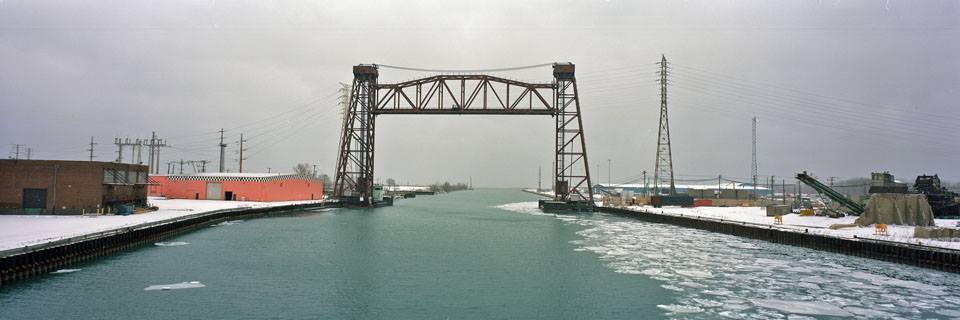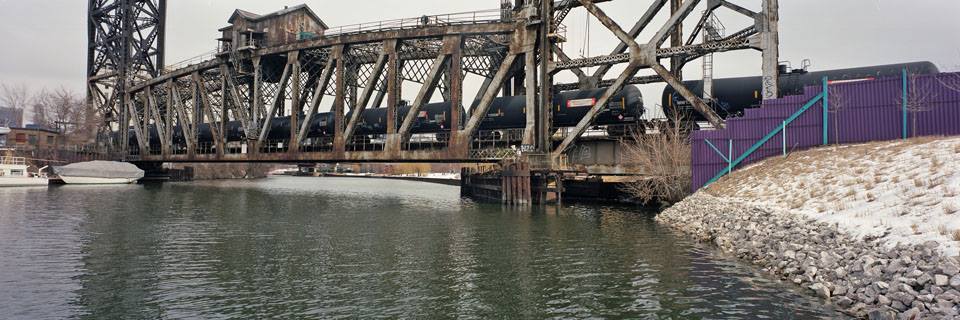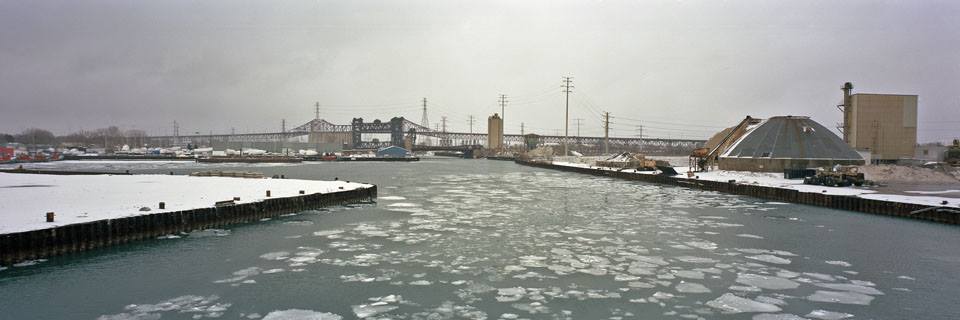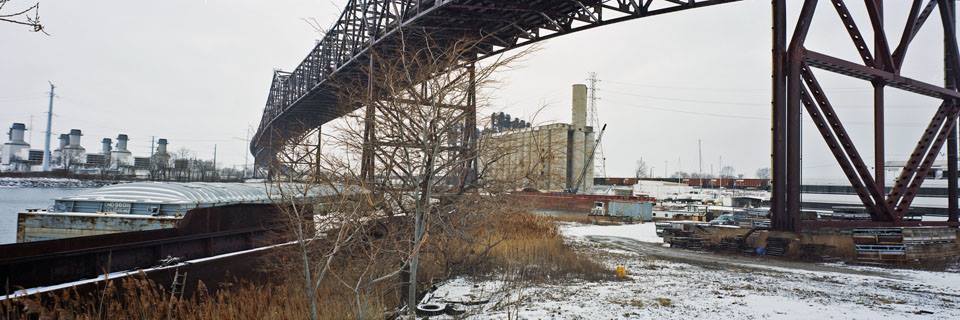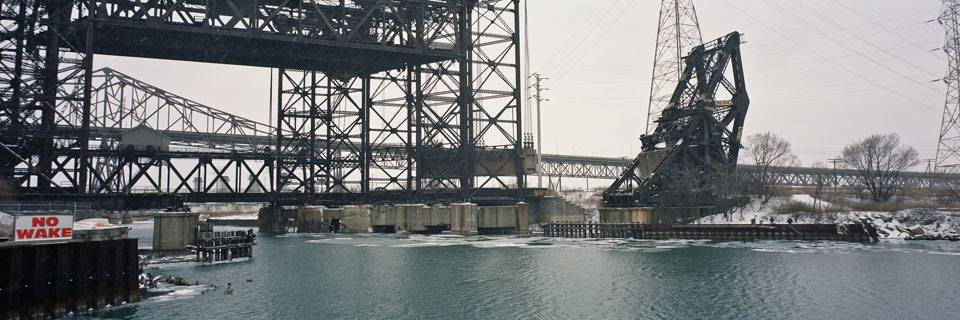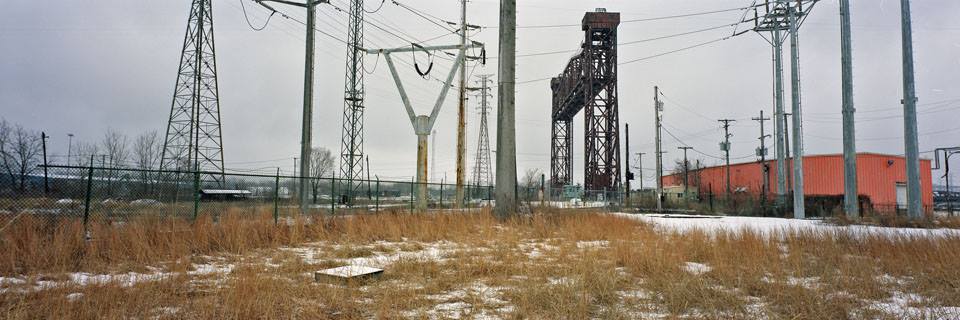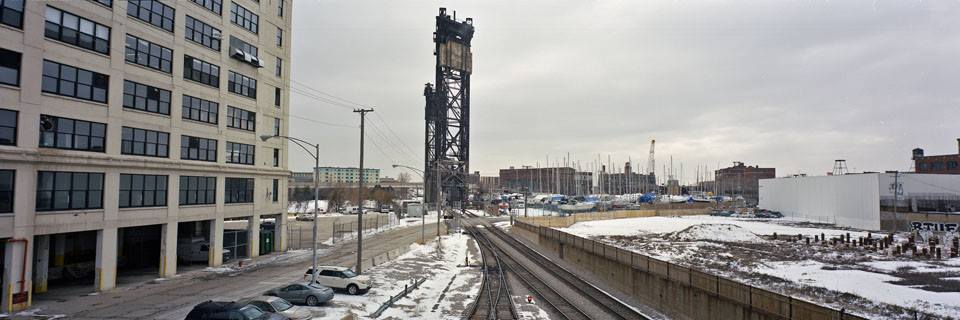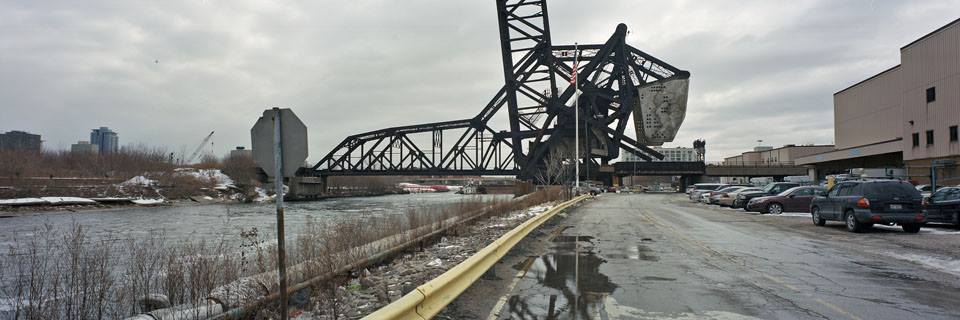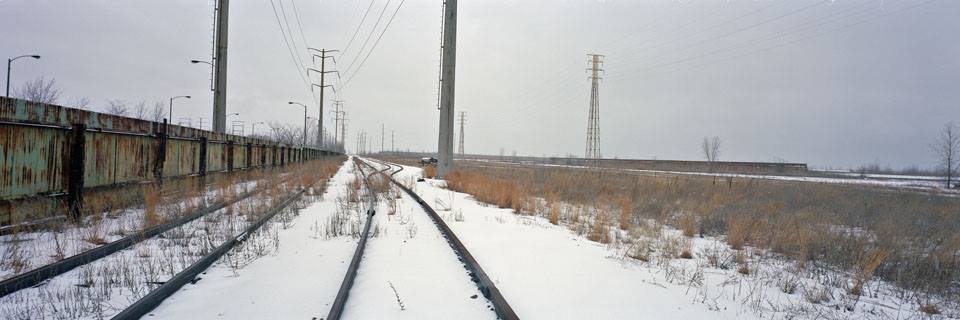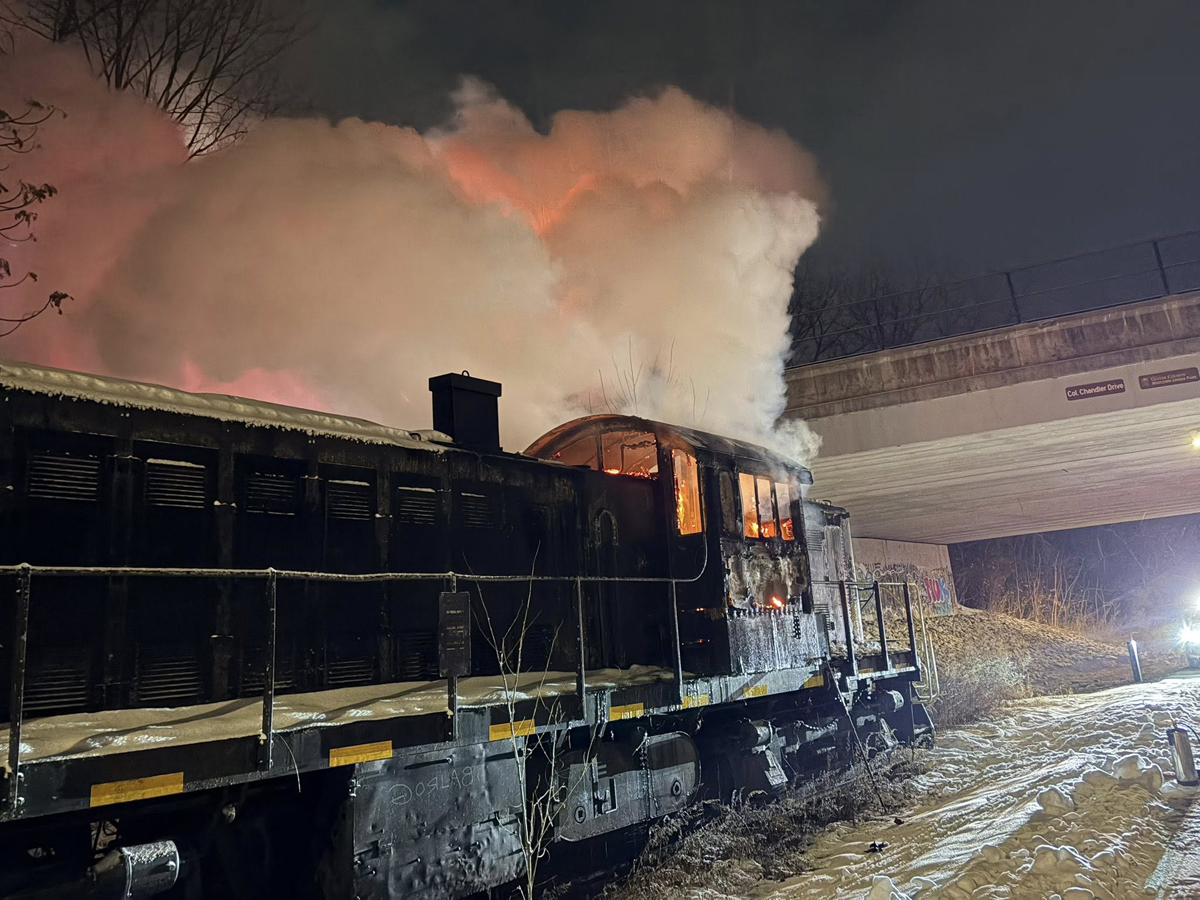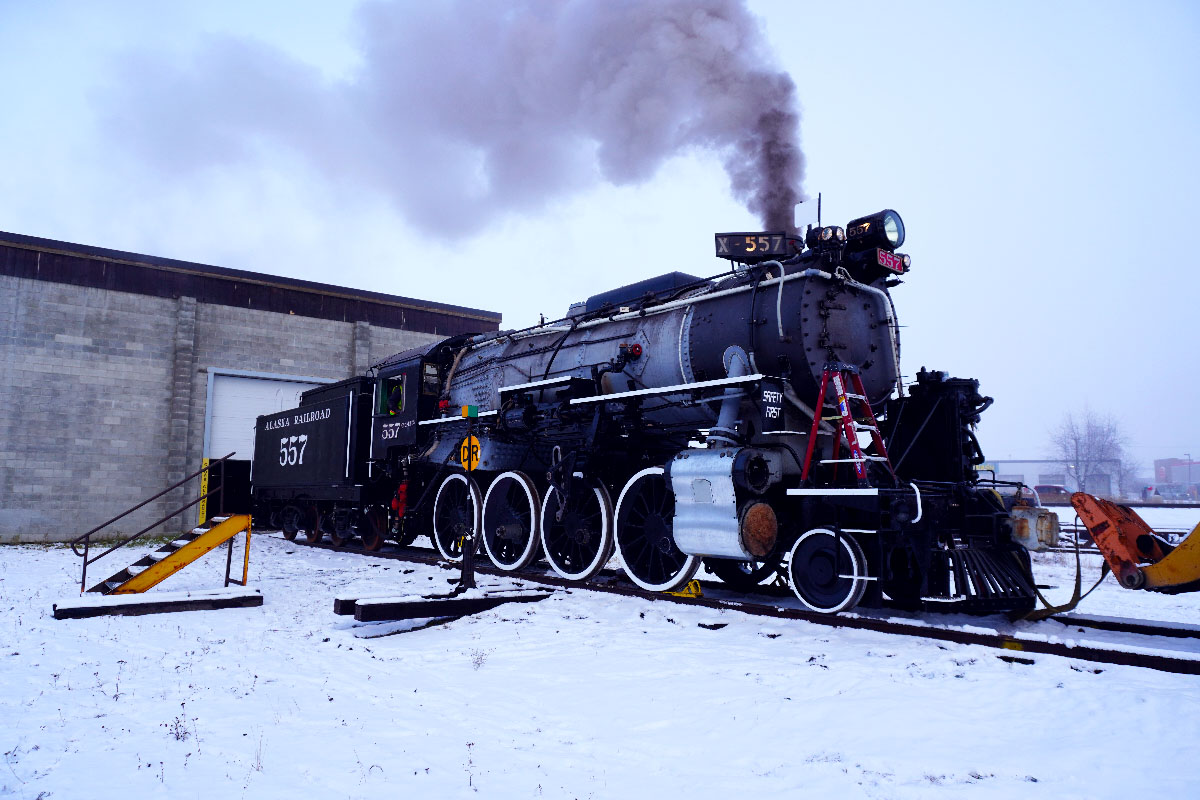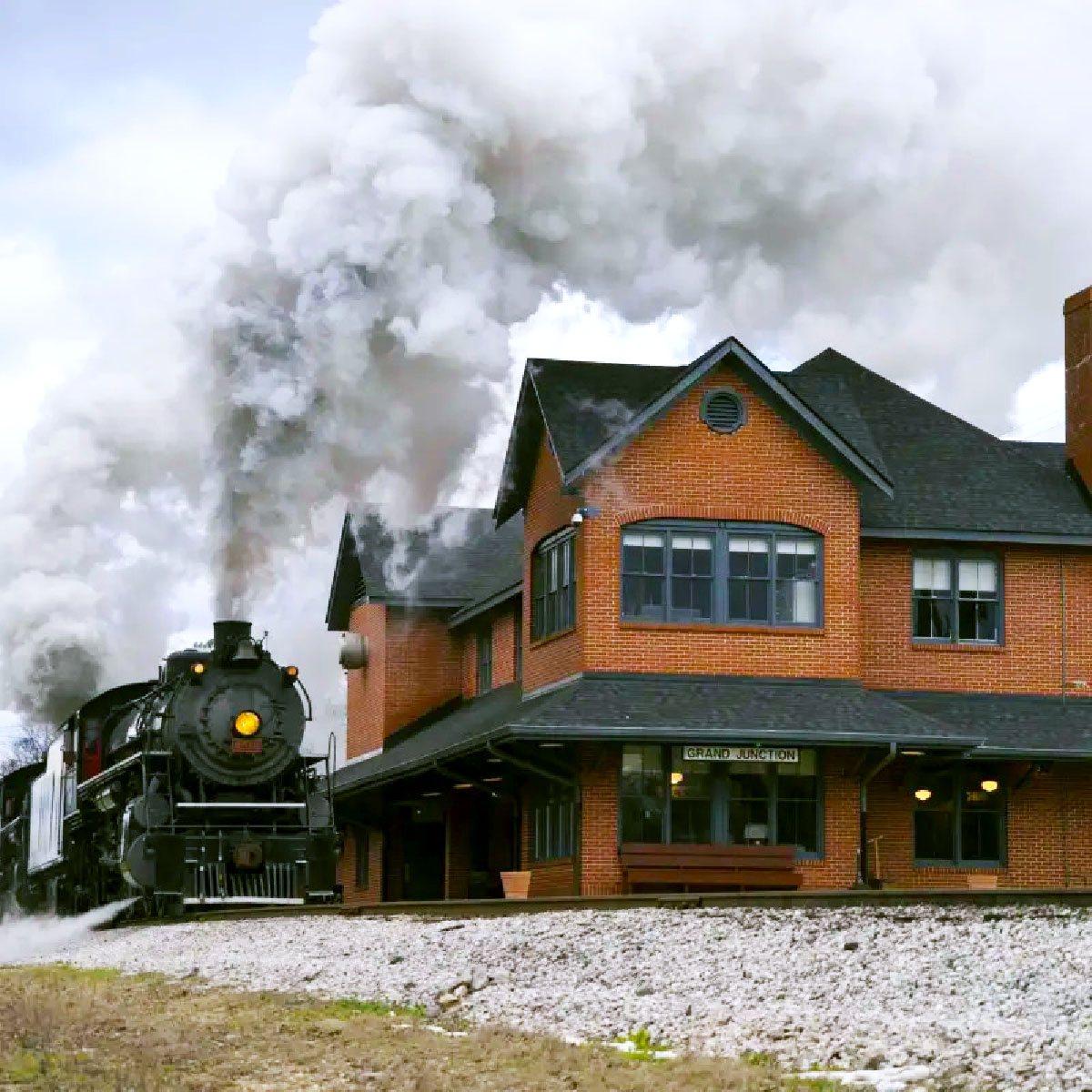“Over the course of many years of passing through Chicagoland and its industrial warrens, I’ve serially spotted the brawn of the bridges spanning the Calumet and Chicago Rivers,” said Klipper. “Last March I had cause to visit that City of Big Shoulders and reckoned it was high time I haul my cameras to those ever-alluring precincts and make some photos.”
Gray skies and snowy patches in the photos show how uninviting the scenes must have been, physically, despite the fine images he obtained.
“It’s part of the lay of the land and the infrastructure we put on it. The weather? You play it as it lays. I don’t seek ideal situations. It is the world as it presents itself,” he says. “I like to explore, and this was territory I’d long wanted to explore. And we found good hot dogs.”
Klipper’s subjects extend far beyond the railroad, and he has hauled his cameras to many alluring areas. He is one of approximately 400 people to have visited both the North and South poles and is especially well known for his Antarctica images, where he has photographed six times. Other major photographic forays have taken him across the Aboriginal outback of northern Australia, the Biblical deserts of Israel and Sinai, the tropical rain forests of Costa Rica, the far reaches of Patagonia and Tierra del Fuego in Chile and Argentina, and throughout the cities and provinces of Sri Lanka and Pakistan. A seafarer at heart, he logged thousands of miles of ocean travel, photographing the world’s oceans and seas.
But Stuart Klipper often returns to the railroad. He was a 2009 presenter at the Center for Railroad Photography & Art conference and brought together a nationwide selection of his railroad photography for conference goers covering nearly all 50 U.S. states.
Klipper says that a railroad’s landscape, more than the trains themselves, draw him trackside.
“I have a thing about infrastructure and ‘hardware’—industrial, transportation, and suchlike,” Klipper says.
“Accordingly, bridges have long loomed large in their topographical and nuts ‘n bolts selves.”
His recent exploration of bridges and rail infrastructure along the Calumet and Chicago rivers happened with the company of friend and former Art Institute of Chicago photo curator David Travis, who knows the industrial backwaters of the area by virtue of keeping boats in a nearby marina.
Despite the digital photography revolution, Klipper prefers film: 120 color negative film in his Linhoff Technorama, which shoots a hefty 6 cm by 17 cm negative, yielding a mere four shots to a roll. He has his negatives scanned and commissions professional digital archival prints. The resulting panorama images provide a sense of the world much like that of natural human vision, which is inclined to perceive more to the sides than above and below.
“The instant of being in a place and making a photograph, for me, philosophically, is still best on film. I put a frame around the subject then and there—I don’t construct it after the fact,” he says. “This camera draws upon the world and creates its own dynamic of space. I like how it helps me perceive space.”
Klipper was born in Bronx, N.Y., and has been a Minnesota resident since 1970. His work has been exhibited worldwide and he has received two Guggenheim fellowships and other awards recognizing his talent.
The Center for Railroad Photography & Art, founded in 1997, is America’s foremost organization for interpreting the intersection of railroad art and culture with America’s history and culture. It holds an annual conference at Lake Forest College in Illinois and produces numerous gallery exhibitions around the country. For more, visit www.railphoto-art.org.





